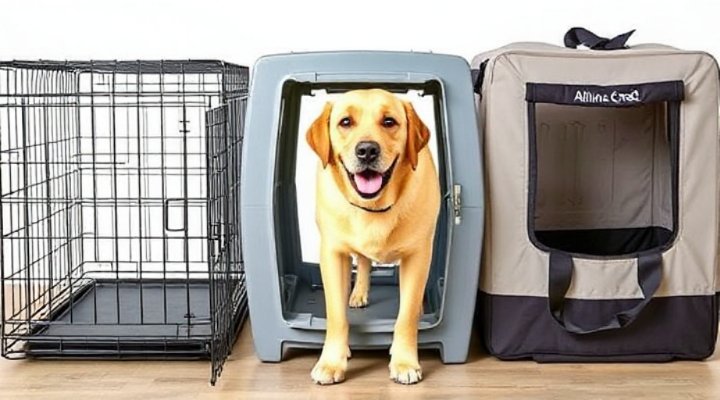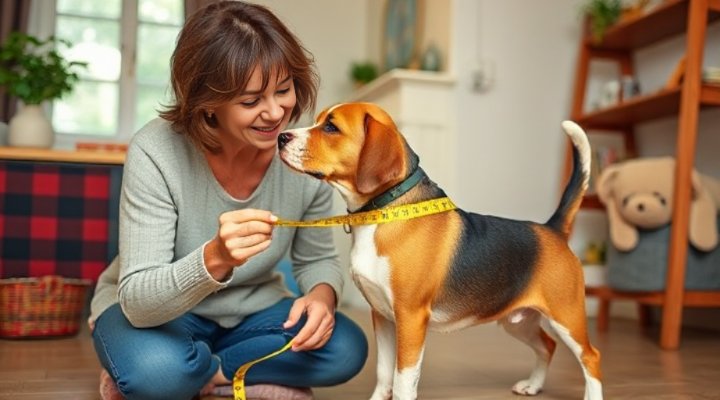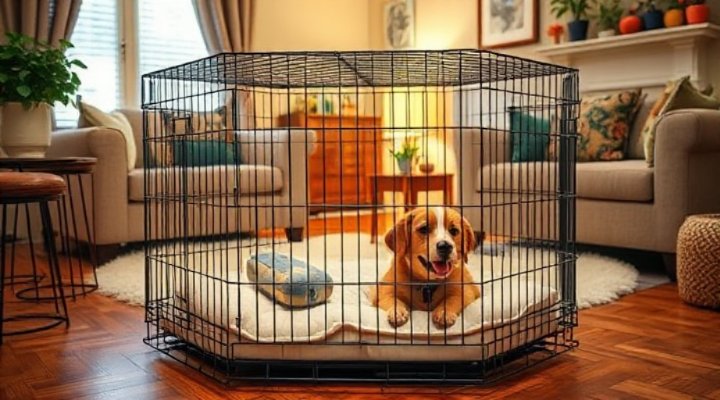Crate training is one of the most effective ways to house train your dog and provide them with a safe space of their own. When done correctly, a dog crate for crate training becomes your pet’s den – a place they willingly go to for rest and security. However, choosing the wrong crate or using it improperly can create stress for both you and your furry friend.

Why Use a Dog Crate for Crate Training?
Dogs are naturally den animals, which means they instinctively seek out small, enclosed spaces for security. This makes crate training particularly effective when introducing a new dog to your home. According to the American Veterinary Medical Association, proper crate use can help with:
- House training
- Preventing destructive behavior
- Creating a safe space during travel
- Managing multiple pets in the home
For more detailed puppy training advice, check out our guide on Puppy and Crate Training.

Types of Dog Crates for Effective Crate Training
Not all dog crates are created equal. The three main types each have their advantages:
Wire Crates
These provide excellent ventilation and visibility, making them ideal for most crate training situations. The removable tray makes cleaning accidents easier, and many models are collapsible for travel.
Plastic Crates
Often required for airline travel, these provide more privacy and can help anxious dogs feel more secure. They’re also more durable for chewers.
Soft-sided Crates
Lightweight and portable, these work well for well-trained adult dogs but aren’t recommended for puppies or destructive chewers.
Our article on Best Crate for Puppy offers more specific recommendations for young dogs.

Choosing the Right Size Dog Crate
Size matters when selecting a dog crate for crate training. A crate that’s too small will be uncomfortable, while one that’s too large defeats the purpose of house training. Here’s how to measure:
- Have your dog stand naturally
- Measure from nose to base of tail
- Add 2-4 inches for comfort
- Measure height from floor to top of head or ears (whichever is taller)
- Add 2-4 inches
For growing puppies, consider a crate with a divider panel so you can adjust the space as they grow. This prevents the “too much space” issue that can lead to accidents.

How to Introduce Your Dog to Crate Training
Positive associations are key to successful crate training. Follow these steps:
Step 1: Make It Inviting
Place soft bedding and a favorite toy inside. You might even feed meals near the crate initially.
Step 2: Use Treats and Praise
Encourage your dog to enter voluntarily by tossing treats inside. Praise when they go in.
Step 3: Gradually Increase Time
Start with just a few minutes with the door open, then closed, building up slowly.
For dogs with separation anxiety, our guide on separation anxiety offers additional strategies.

Common Crate Training Mistakes to Avoid
Even with good intentions, owners often make these errors:
- Using the crate as punishment
- Leaving the dog crated too long
- Not making the crate comfortable
- Rushing the training process
- Ignoring the dog’s distress signals
Remember, the goal is for your dog to see their crate as a happy place. The ASPCA recommends never leaving a dog crated for more than 4-6 hours at a time.
Advanced Crate Training Tips
Once your dog is comfortable with basic crate use, try these techniques:
Create a Routine
Dogs thrive on predictability. Establish consistent times for crating and releasing.
Use Verbal Cues
Phrases like “kennel up” help your dog understand what’s expected.
Practice Short Absences
Build up your dog’s tolerance by stepping out briefly and returning before they get anxious.
For more advanced training techniques, see our Golden Retriever Puppy Training guide.
Traveling with Your Dog Crate
A well-trained crate dog makes travel much easier. Always:
- Secure the crate in your vehicle
- Provide familiar bedding
- Include a safe chew toy
- Plan regular breaks for water and exercise
With patience and consistency, your dog’s crate will become their favorite retreat. Remember that every dog learns at their own pace – what takes one dog a week might take another a month. The key is making the experience positive and rewarding.
Related keywords: dog crate training, puppy crate, kennel training, house training dogs, dog behavior solutions, pet safety products, dog travel crate

